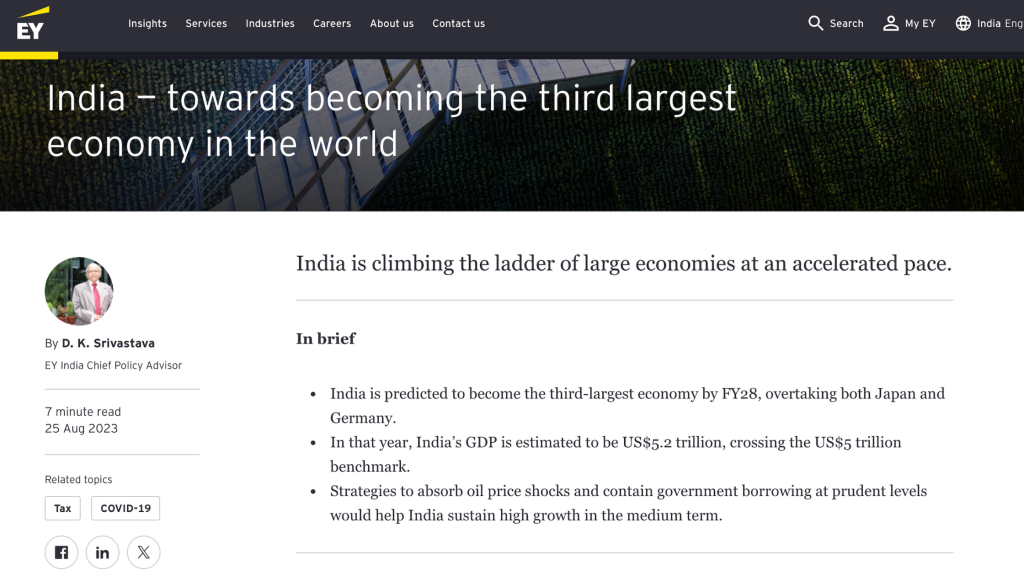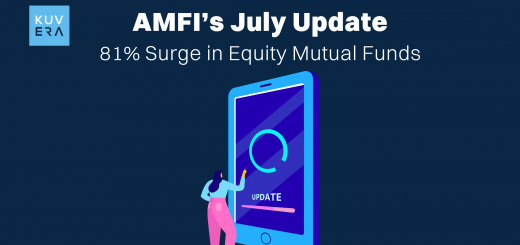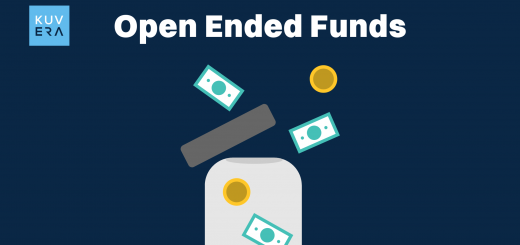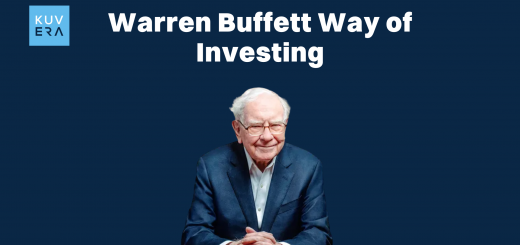This is a guest post authored by the team at Axis Mutual Fund, one of India’s leading fund houses with ₹ 2,97,193 Cr of Assets Under Management as of 30th June, 2024.
Whether you are an experienced investor or just starting your journey in the financial markets, understanding the basics of a broad-based index can be useful for your investment strategy.
The Nifty 500 Index includes the top 500 companies listed on the National Stock Exchange of India (NSE). In this comprehensive guide, we shall delve into the components, significance and strategies for using the Nifty 500 to achieve our financial goals.
India’s Promising GDP Growth Story
India’s economy has been on a robust growth trajectory, making it one of the fastest-growing major economies in the world. With a young population, burgeoning middle class, and a government committed to reforms, India’s GDP is expected to continue its upward climb. This growth story provides a fertile ground for investors looking to capitalize on the expanding market opportunities. According to EY, India is predicted to become the third-largest economy by FY28, overtaking both Japan and Germany. India’s GDP is estimated to cross US$5 trillion benchmark by then. The government’s reforms, and manufacturing push coupled with an improving physical and digital infrastructure would help India sustain high growth in the medium to long term.

Market experts believe that, this will lead to rewarding next 10-15 years for investors in India. As the economy matures and diversifies, the stock market is likely to reflect this progress. A growing economy, combined with increased corporate profitability, sets the stage for substantial returns on investments.
Navigating a Sea of Investment Options
Investors looking to get the benefits of the potential growth of Indian equities, are spoiled for choice, with a plethora of options ranging from large-cap, mid-cap, and small-cap stocks to thematic and sector-based schemes. The complexity increases with the need to time investments, particularly in sector-specific and thematic funds. This overwhelming array of choices can make decision-making daunting. This is where passive investing comes in to play.
Nifty 500: A Broad Market Solution
The Nifty 500 Index offers a comprehensive solution by providing the broadest exposure to India’s listed equities. Covering approximately 92% of the total market capitalization, it is an effective tool for capturing the overall market performance. This broad exposure helps mitigate the risk associated with individual stock picking and sector allocation.
One of the key strengths of the Nifty 500 Index is its diversification. The largest stock in the index constitutes around 7%, while the top 10 stocks make up just 33%. This diversified weighting reduces the impact of any single stock’s performance on the overall index, providing a more stable investment.
The Nifty 500 Index offers well-diversified coverage across all key macroeconomic sectors of India’s economy. The largest sector weight is around 29%, ensuring that investors gain exposure to a variety of sectors, thereby spreading risk and capitalizing on multiple growth drivers.

Source – Nifty Indices, Data as of 28 Jun 2024
The index maintains a balanced allocation to large, mid, and small-cap stocks, with ratios of 72%, 18%, and 19% respectively. This natural allocation ensures that investors benefit from the stability of large-cap stocks, the growth potential of mid-caps, and the high growth prospects of small-cap stocks.
Start investing in Index Funds.
25 Years of wealth creation by Nifty 500 Index

Source – Nifty Indices, Data from Jun 1999 to Jun 2024.
Total Return index values of Nifty 500 goes back to 1998. Historically, the Nifty 500 Index has delivered a total return of 15.9% over the past 25 years as of 31 May 2024. An investor who invested INR 1,00,000 into this index would see their investment grow over 40 times to INR 40,31,000 in just 25 years (based on total returns index, investors are expected to incur investment cost TER and tracking error). These returns came with a risk level slightly lower, as the Nifty 500 standard deviation was 20.5% compared to 21.5% in case of Nifty 50.
Conclusion
The Nifty 500 Index stands out as a compelling investment option, offering extensive market coverage, diversification, and strong historical returns. It provides a balanced approach to investing in India’s dynamic economy, making it an excellent choice for those looking to build a resilient and growth-oriented portfolio. By investing in the Nifty 500 Index, investors can confidently tap into India’s growth story without the need to navigate the complexities of individual stock selection and market timing.
Statutory Disclaimer: Axis Mutual Fund has been established as a Trust under the Indian Trusts Act, 1882, sponsored by Axis Bank Ltd. (liability restricted to Rs. 1 Lakh). Trustee: Axis Mutual Fund Trustee Ltd. Investment Manager: Axis Asset Management Co. Ltd. (the AMC) Risk Factors: Axis Bank Limited is not liable or responsible for any loss or shortfall resulting from the operation of the scheme.
Mutual Fund Investments are subject to market risks, read all scheme related documents carefully.
Interested in how we think about the markets?
Read more: Zen And The Art Of Investing
Watch here: Investing in Focused Mutual Funds
Start investing through a platform that brings goal planning and investing to your fingertips. Visit kuvera.in to discover Direct Plans of Mutual Funds and Fixed Deposits and start investing today.
AREVUK Advisory Services Pvt Ltd | SEBI Registration No. INA200005166
DISCLAIMER: Mutual Fund investments are subject to market risks. Read all scheme related documents carefully. Registration granted by SEBI, membership of BASL (in case of IAs) and certification from NISM in no way guarantee performance of the intermediary or provide any assurance of returns to investors. Investments in securities market are subject to market risks. Read all the related documents carefully before investing. The securities quoted are for illustration only and are not recommendatory.













